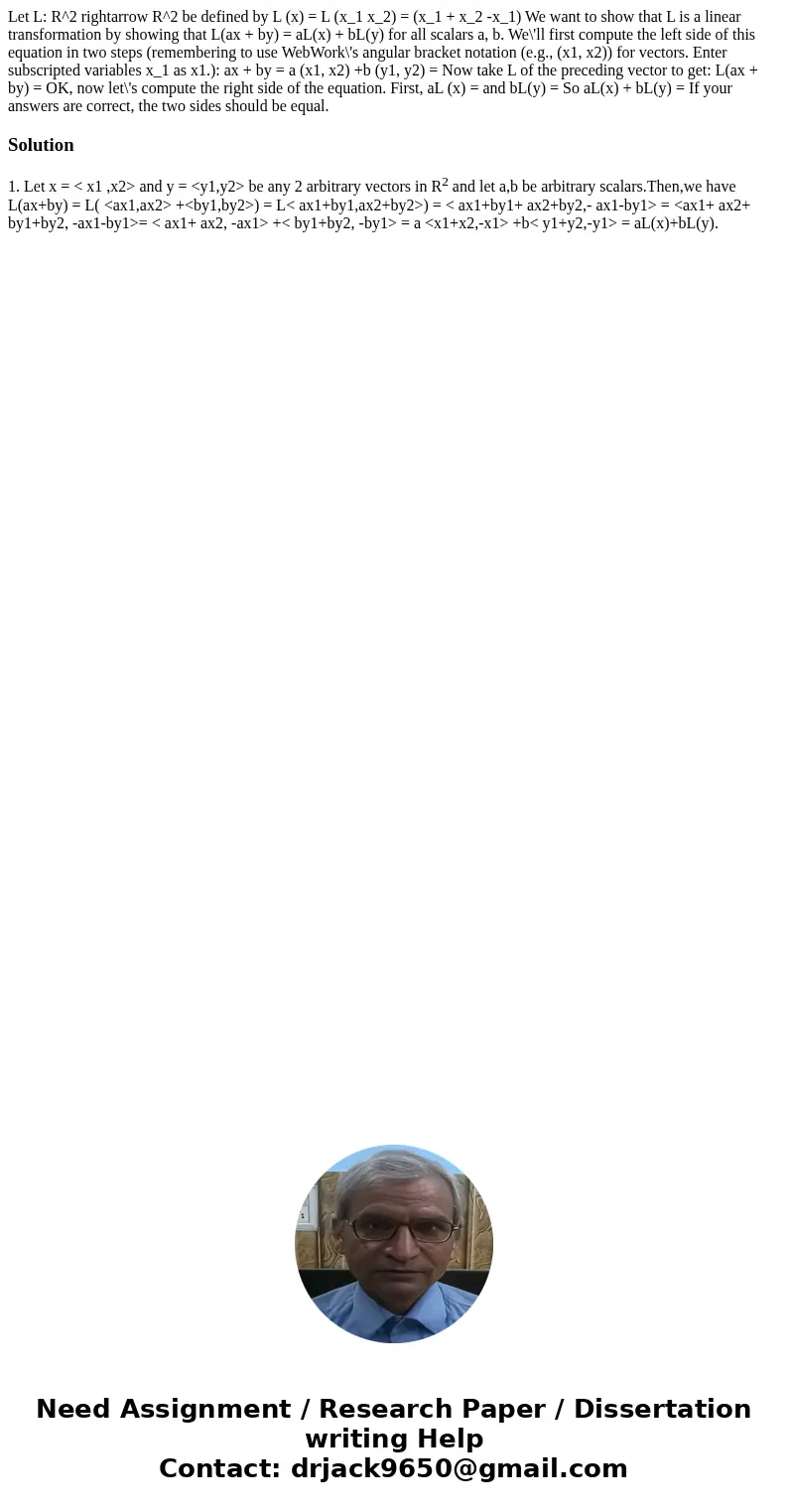Let L R2 rightarrow R2 be defined by L x L x1 x2 x1 x2 x1
Let L: R^2 rightarrow R^2 be defined by L (x) = L (x_1 x_2) = (x_1 + x_2 -x_1) We want to show that L is a linear transformation by showing that L(ax + by) = aL(x) + bL(y) for all scalars a, b. We\'ll first compute the left side of this equation in two steps (remembering to use WebWork\'s angular bracket notation (e.g., (x1, x2)) for vectors. Enter subscripted variables x_1 as x1.): ax + by = a (x1, x2) +b (y1, y2) = Now take L of the preceding vector to get: L(ax + by) = OK, now let\'s compute the right side of the equation. First, aL (x) = and bL(y) = So aL(x) + bL(y) = If your answers are correct, the two sides should be equal.
Solution
1. Let x = < x1 ,x2> and y = <y1,y2> be any 2 arbitrary vectors in R2 and let a,b be arbitrary scalars.Then,we have L(ax+by) = L( <ax1,ax2> +<by1,by2>) = L< ax1+by1,ax2+by2>) = < ax1+by1+ ax2+by2,- ax1-by1> = <ax1+ ax2+ by1+by2, -ax1-by1>= < ax1+ ax2, -ax1> +< by1+by2, -by1> = a <x1+x2,-x1> +b< y1+y2,-y1> = aL(x)+bL(y).

 Homework Sourse
Homework Sourse